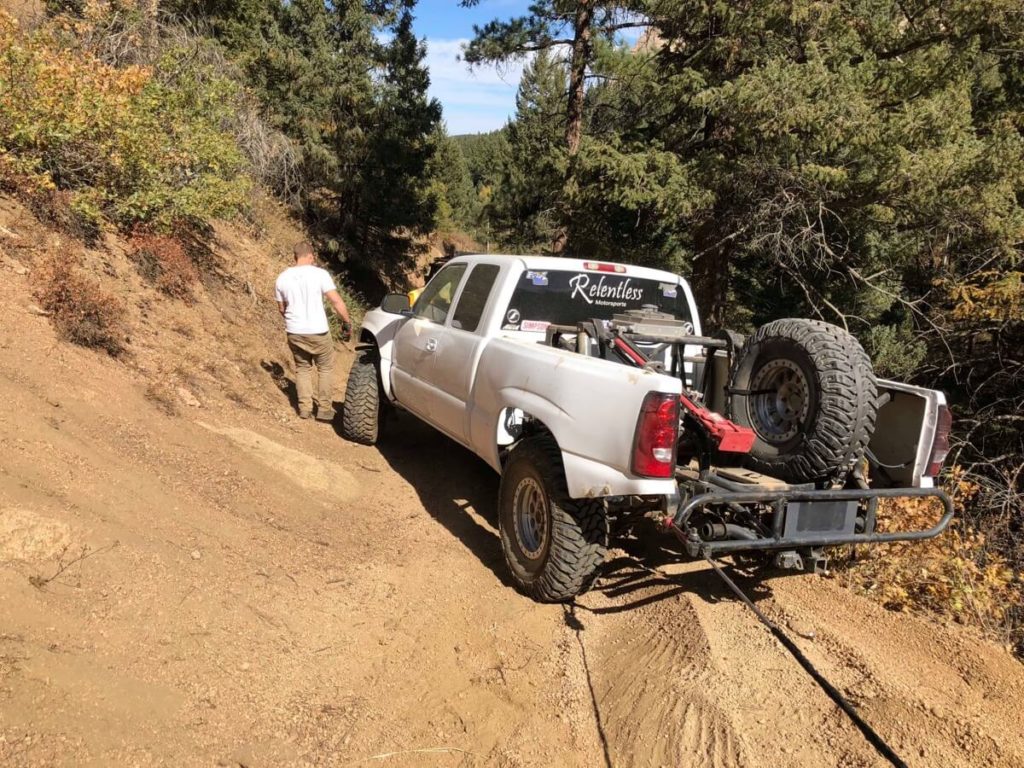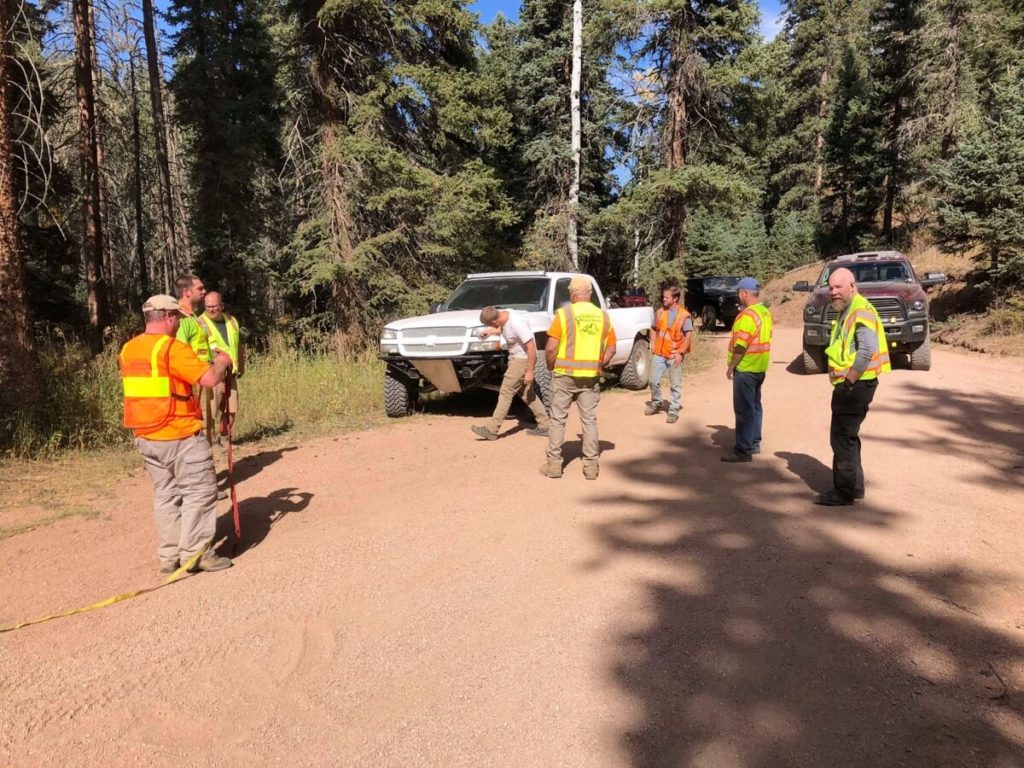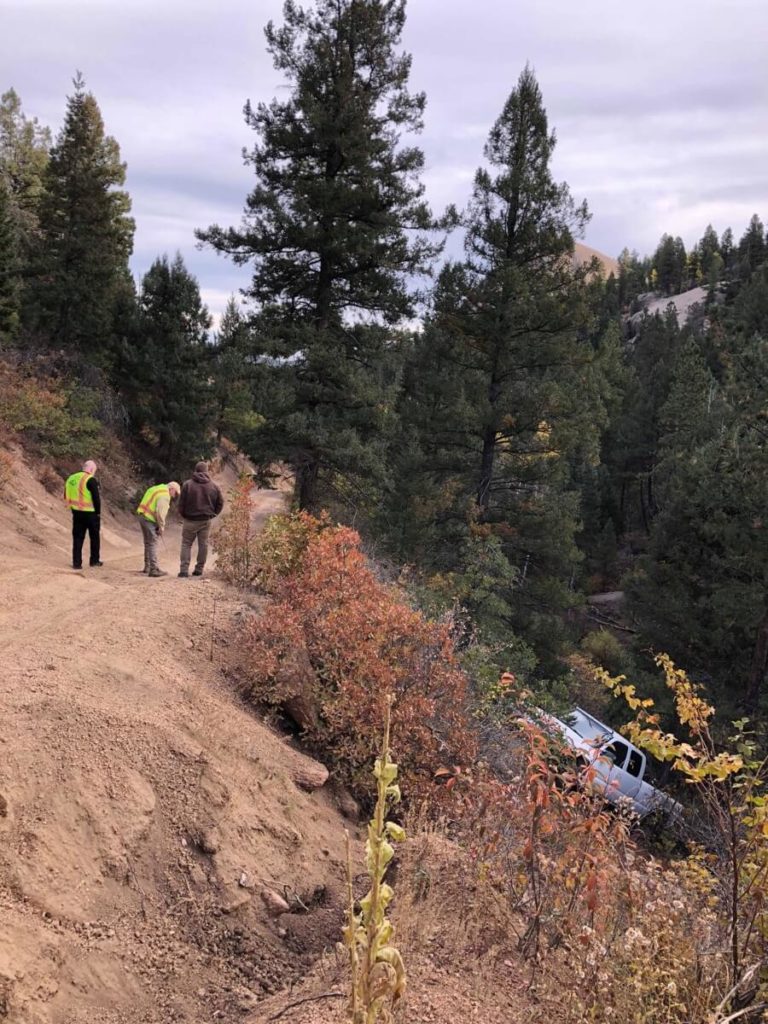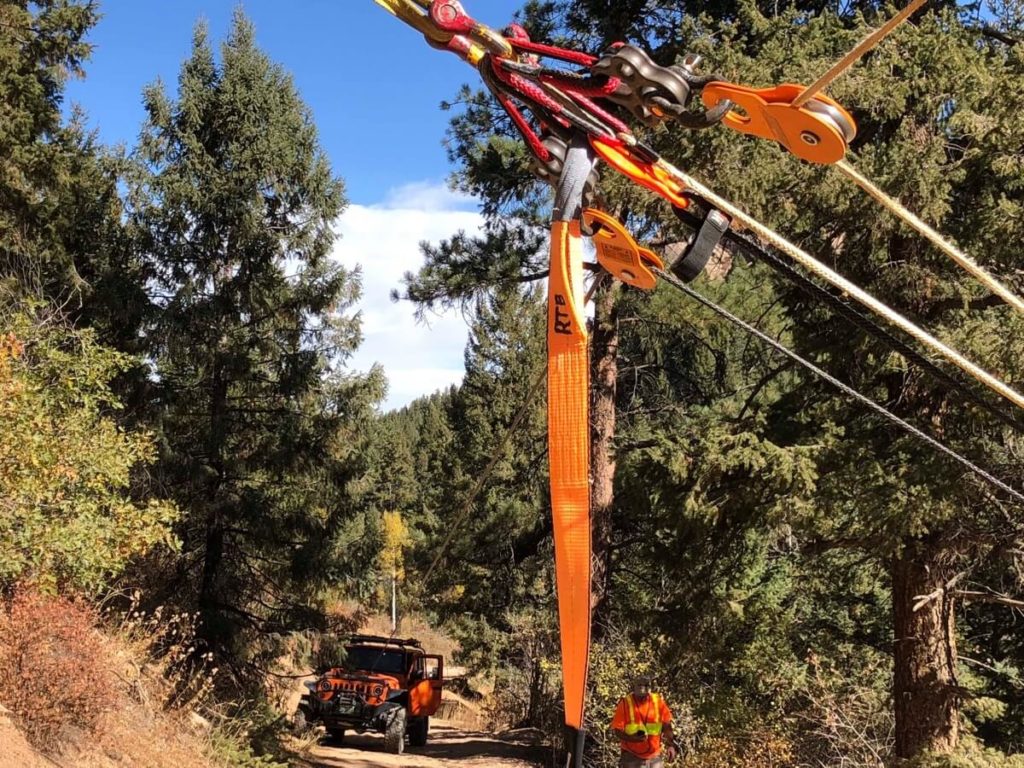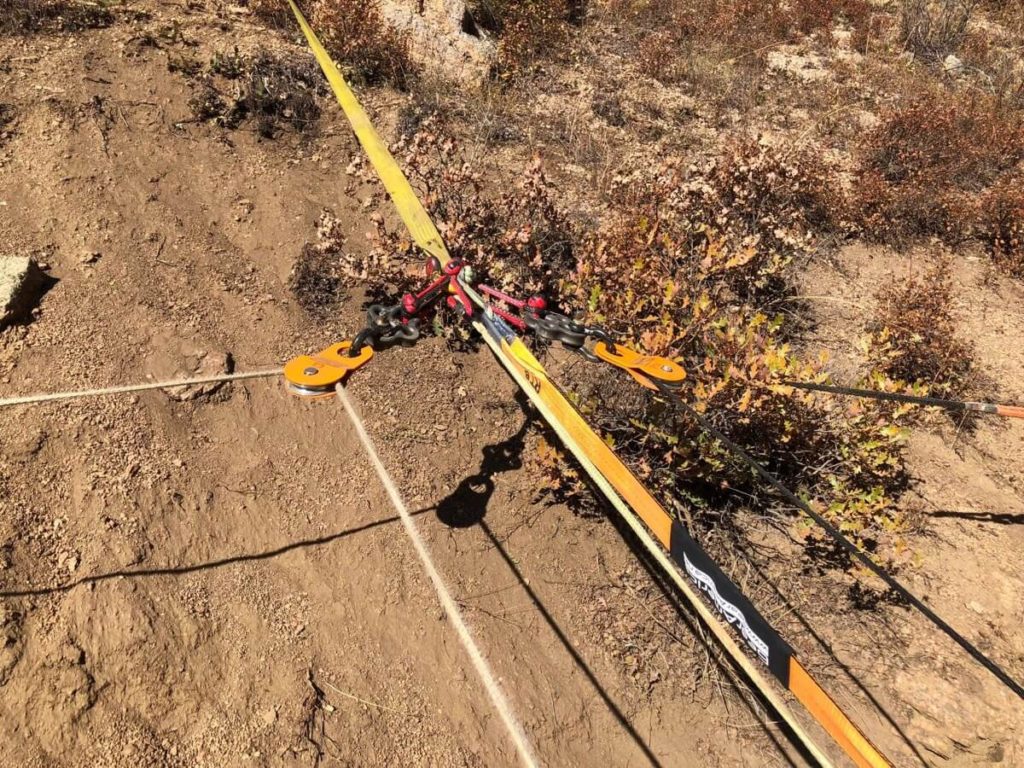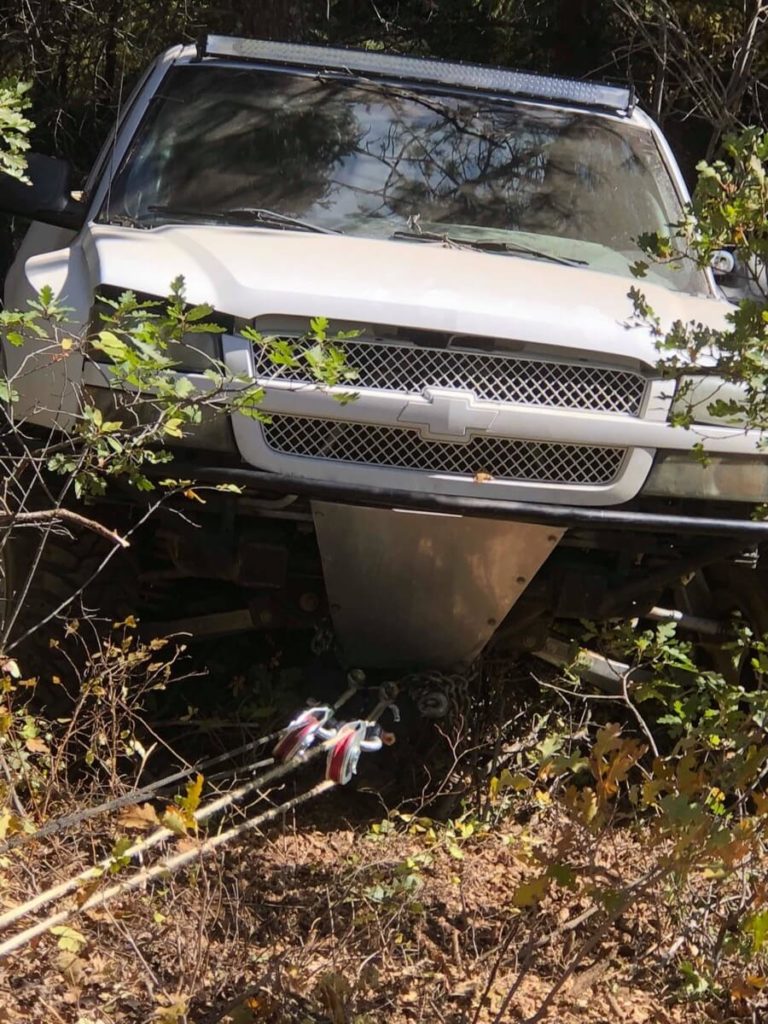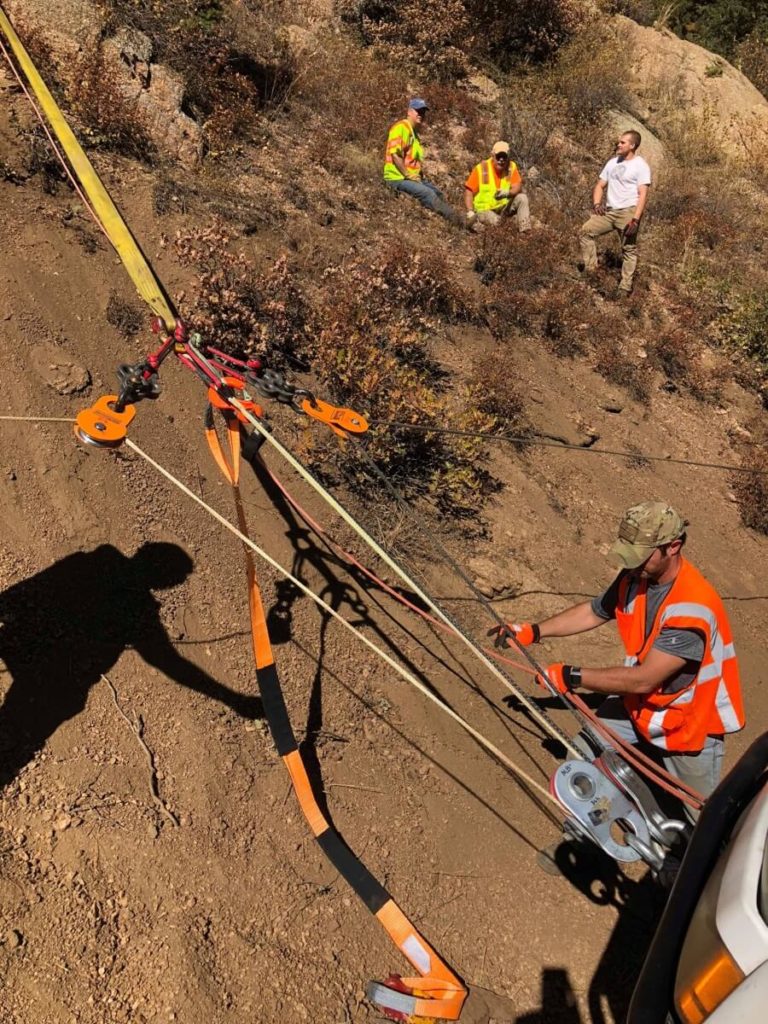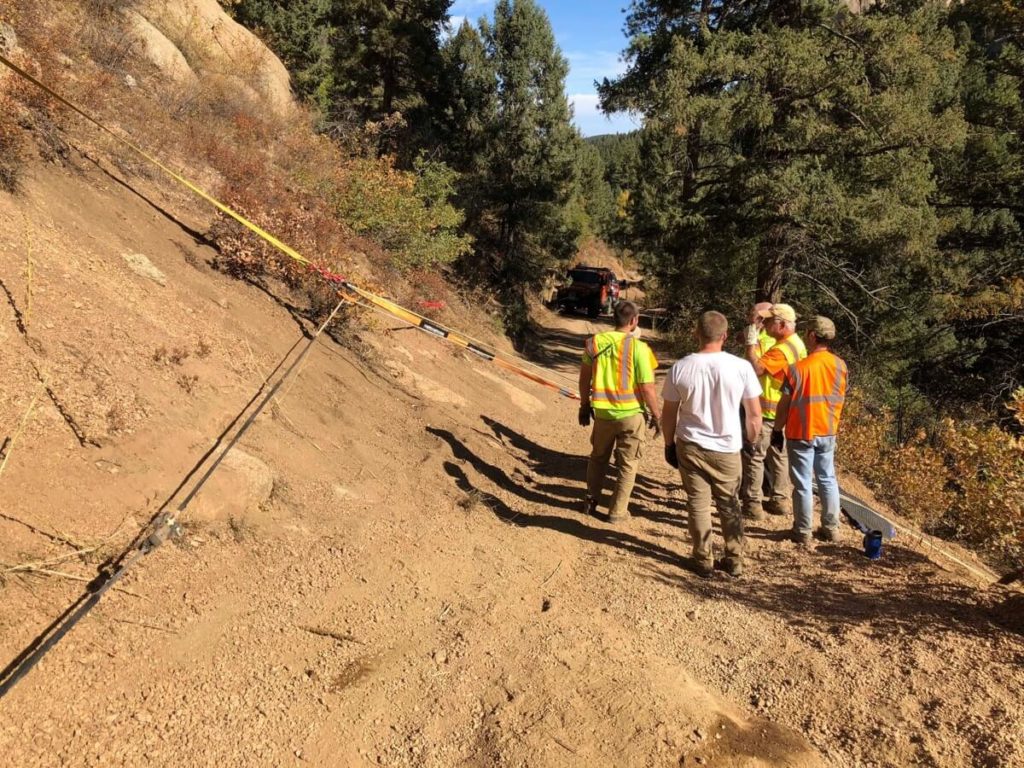October 9, 2019 | Categories: Mission Reports
Mission Report: Sedalia
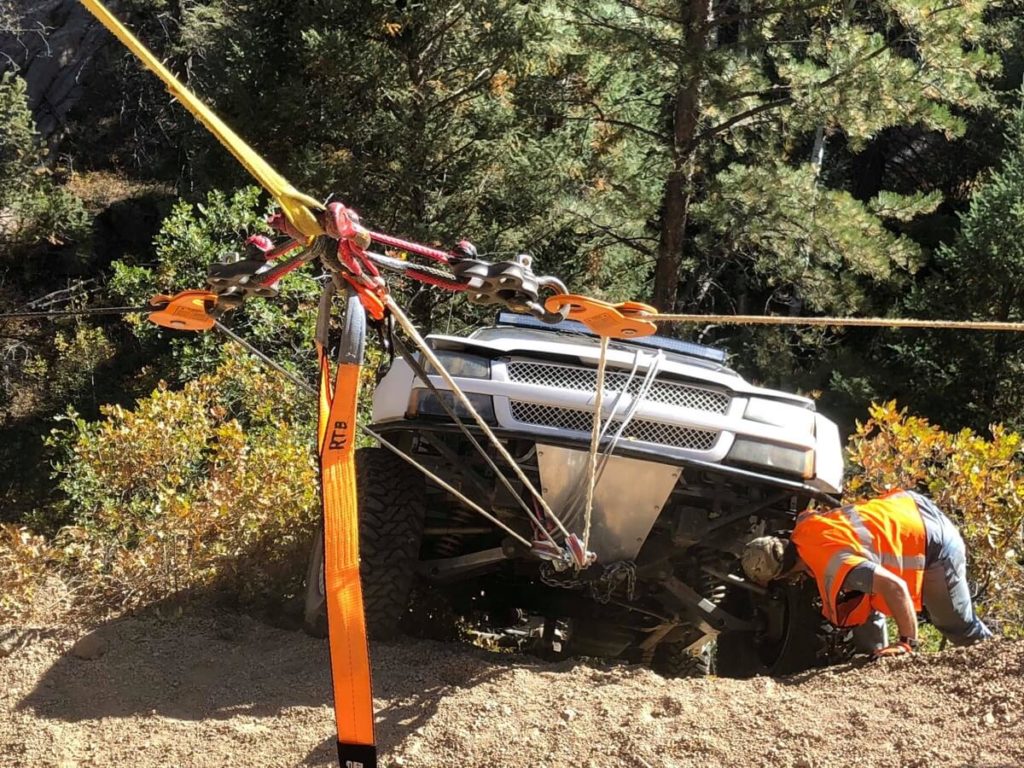
Sedalia, CO Recovery Report:
On October 7th, 2019, a call came into dispatch for a 2005 Silverado that was approximately 40 feet down an embankment, just outside of Sedalia, CO. A team was assembled for October 9th in an attempt to beat the predicted weather coming into Colorado on the 10th.
This highly modified Silverado hit a large hole and snapped the steering rack, which forced the wheels to turn, taking the vehicle off trail just slightly. RP attempted to recover himself using another vehicle with a winch, but all attempts just caused it to slide farther down the hill where it came to rest.
Rigging decisions: The 2500 Duramax weighs approximately 6,500 pounds, and the uphill angle adds in some mire resistance to an estimated 9000 pounds. Because there was only one good option uphill to use as an anchor, creative rigging was needed. Three 30′ straps (a 30,000 and two 36,000 pound rated) were used to form the anchor line. All of the rigging is attached to a 1″ Skookum shackle (16 Ton with a 5:1 safety margin) with 52,000 pound soft shackles. Two Factor 55 LDP’s were used to connect the two redirect pulleys in order to keep them parallel to the ground. Two more pulleys were used on the front of the RP vehicle as well. Each winch was pulling on it at 2:1 reduction attached to 7/8″ hard shackles, which were attached to 52,000 pound soft shackles, anchored to the truck by three wraps of G70 3/8″ chain. There were no other attachment options with the homemade front end of the truck.
Both winch vehicles were anchored from behind with other team members vehicles. This rigging was over-engineered purposely, and it very likely could have been done with just one winch. The team lead chose to use two to increase safety, and decrease the effort on a single winch if something went wrong.
Recovery: Two spotters were positioned in safety zones to watch the anchor line and the vehicle, and a third situated himself in a safe location uphill to direct the winching operations via radio. It was a smooth and easy uphill pull to where we had the vehicle near the trail. It was then anchored using a winch extension and an X-lock, so the up-trail winch vehicle could be re-positioned. One more pull brought the front wheels up onto the roadway, where the vehicle was again anchored with winch extensions and an X-lock. The initial rigging was broke down, and the down-trail winch vehicle was re-rigged with a redirect pulley off a tree closer to it. This allowed the uphill and downhill winched vehicles to swing the truck back onto the trail.
The tow to trailhead: We initially connected the tow vehicle in an X configuration using two 15 foot straps with a kinetic rope attached to the rear, and then bridled to the brake vehicle. A short distance down the trail, the RP vehicle failed to track correctly behind the tow vehicle, so the team decided to pull it backwards. Two ratchet straps were used to brace and limit the amount that the front wheels could turn, and after that rigging, a smooth 30 minute tow to the trailhead completed the operation.
Times:
On-scene at 8:50
Rigged at 10:35
RP on trail at 12:00
Flat tow started at 12:45
Operation complete 14:00
Colorado 4×4 Rescue and Recover – We Recover the Rockies!
View and comment on Facebook: https://www.facebook.com/CO4x4RnR/posts/2372209906411714

